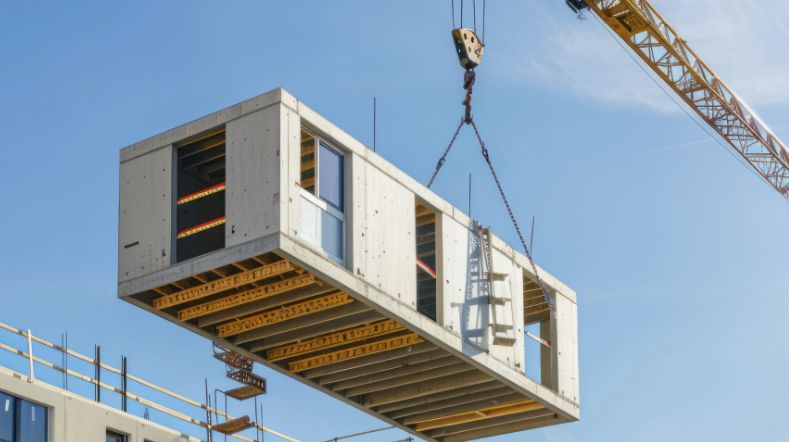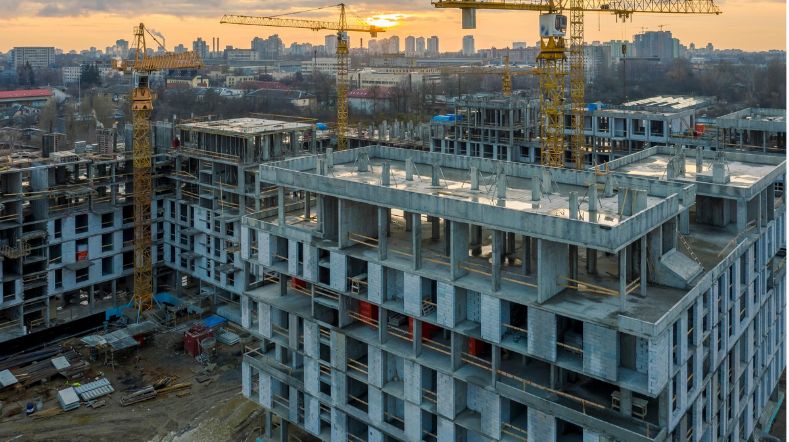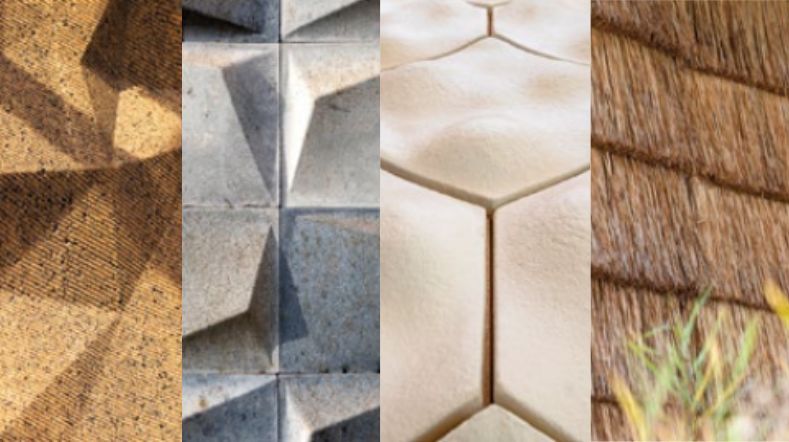
Reclaimed timber deserves a new purpose as a high-quality building material
Reusing timber is becoming key to achieving sustainability goals in the construction sector. Reclaimed timber is already being harnessed in a more sustainable and valuable way, one example is circular cross-laminated timber. At TNO BioBuilt, we are working together with the market to scale up these promising building materials. Niels Vonk (TNO) and Tim Vermeend (Urban Climate Architects) talk about the collaboration.
How can we make buildings more sustainable?
Emissions in the construction sector can be cut significantly by using more bio-based products and reusing materials from waste streams, such as reclaimed timber, in a high-quality manner. Currently, reclaimed timber is often incinerated to generate energy, but this releases the carbon that was captured by the wood while it was growing. By reusing reclaimed timber in construction, carbon is stored for a longer period, which directly helps limiting global warming.
For that reason alone, (reclaimed) timber needs to gain wider acceptance as a primary construction material, says Niels Vonk, a scientist innovator at TNO specialised in circular timber applications.
‘The Netherlands has a long tradition of building with stone or stone-like materials such as bricks and concrete. We don’t traditionally build with timber, unlike, for example Norway, where the majority of homes are built with timber. Of course, we have fewer forests in the Netherlands, but the problem is also limited acceptance: not everyone likes the idea of living in a wooden house. That’s where this huge challenge lies for us: we need to show that a timber house is just as sturdy as one made out of bricks or concrete in each and every way.’
Pre-production facility for bio-based innovations
By ‘us’, Niels refers to himself and his colleagues at the new TNO BioBuilt. ‘This is a pre-production facility where we will be collaborating with the market to bring bio-based innovations to market faster. Across the Netherlands, multiple pioneering companies are driving the transition to carbon-neutral construction by developing innovative bio-based building materials. But they often lack the specific knowledge, resources, or facilities to scale up.’
‘We support the construction industry with in-depth material knowledge, testing methods, and production techniques. Moreover, we at TNO BioBuilt offer access to a range of state-of-the-art technologies that allows companies to produce prototypes. This is crucial, because builders need to be able to gain experience with the material before deploying it on a large scale.’

'So, we have scientific proof that the quality of reclaimed timber can be competitive to virgin timber.'
Optimal timber usage
Reclaimed timber offers a promising sustainable building material, provided if processed and applied properly. Niels continues: ‘The Dutch timber market consists of around 6 million tonnes a year, of which about 1.5 million tonnes of secondary wood is reclaimed annually. It is estimated that about 20% is suitable for reuse.’
Niels also explains how reclaimed timber is perfect for producing laminated timber building materials, such as CLT (Cross-Laminated Timber) and Glulam (Glued Laminated Timber). ‘Combining reclaimed timber with virgin timber, which is available in the Netherlands, offers a great deal of potential to develop high-quality bio-based building materials. ’
‘In laminated applications, the outer layers are subjected to the highest stresses, and therefore have to be stronger than the inner layers. Within circular CLT (c-CLT), we use new hardwood for the outer layers, whereas the core is made from reclaimed wood, for example from pallets. In this manner a low-value material is upcycled into aa desired building product for load-bearing walls or floors.’
Better acceptance and regulation
TNO research now shows that c-CLT with 30% reclaimed timber are about 36% stronger and 3% stiffer than commercially available CLT. Niels: ‘So, we have scientific proof that the quality of reclaimed timber can be competitive to virgin timber. These important results will help us contribute to the acceptance of reclaimed timber in the construction sector and among policy makers.’
Still, there is work to be done on the regulatory front, Niels argues. He points to Norway, where objective assessment standards have been developed for the reuse of reclaimed timber.
‘These are essential to determine whether reclaimed timber is safe for use. The strength grading of reclaimed timber is more complex than for virgin timber, partly because we often don’t know the origin of the reclaimed timber. That is why we at TNO are developing improved grading methods. With non-destructive, digital techniques, we can determine the stiffness and strength of each board individually to determine the application it is suitable for.’

'We have since developed a semi-automated process to efficiently remove metal from pallet wood. The next step is to scale up that process even further.’
Upscaling through automated production
To stimulate the usage of reclaimed timber, TNO facilitates the production of c-CLT at TNO BioBuilt.
Niels continues: ‘We are working on a semi-automated production process, which will show the market that c-CLT is not only of high quality, but can also be produced on a large scale. We hope this will inspire others to commission c-CLT production.’
It all starts with assessing the quality of the available reclaimed timber. ‘For that, we use a CT scan’, Niels explains. ‘That shows us things like density, any deterioration due to for example wood rot, and whether there are any nails or other fasteners present. Metal can severely damage woodworking machinery, so it must be removed. We also check for chemical contamination so we can process the material safely. The metal is then removed using robotics and processed into material we can use.’
The goal is to get the absolute most out of the reclaimed timber and end up with a high-quality product. ‘Hardwood, for example, can be used to make window- and doorframes. And softwood is suited for CLT.’
Pallet wood: the low-hanging fruit
Thanks to its consistent composition and lay-up, palletsare the low-hanging fruit when it comes to reusing wood, Niels explains. ‘Because of their standardised dimensions, pallets can be reused without many technical issues. Plus, we have more than enough of them: around2.5 billion pallets are in circulation in Europe alone. And they are typically single use: once they’re no longer needed, they are burnt or processed into fibreboard, which is a form of downcycling.’
‘We prefer to reuse the pallets at an equal or higher level. We recently explored the potential of this by manually breaking down single-use pallets, de-nailing them, and processing them into CLT panelsof 1.2 x 3 metres’, Niels says. ‘That experiment yielded promising results. We have since developed a semi-automated process to efficiently remove metal from pallet wood. The next step is to scale up that process even further.’
From experiment to scale-up: an architect’s perspective
The Urban Woods is a ten-storey residential building project in Delft and the world’s first to use CLT containing reclaimedpallet wood. Architect Tim Vermeend of Urban Climate Architects sees bio-based construction as a crucial step towards carbon-neutral construction. ‘For us to make construction carbon-neutral, we need to use bio-based materials’, he states in the video.
Tim stresses that c-CLT is a promising material. ‘We have shown that with 30% reclaimed timber in CLT, we can make panels that are even stronger than traditional CLT.’ Scaling up, however, remains difficult in practice. ‘The market lacks the knowledge and resources to produce innovative materials like c-CLT and to scale up.’
The collaboration between the architectural firm and TNO is key to this. ‘Our collaboration with TNO is particularly positive and enjoyable. We take a pragmatic approach, focusing on both applicability and scalability.’ TNO’s new facility acts as ‘the bridge between our current knowledge and future practice’, Vermeend says.
Thanks to the new facility, designers and market parties can start using circular materials in real projects. ‘This example highlights the potential to reuse reclaimed wood in a way that creates much greater value than current practices do’, Niels Vonk concludes. ‘And it shows just how much is already possible. If we’re serious about achieving 100% circular construction by 2050, we urgently need more bio-based building materials and circular alternatives in the coming years.’

‘TNO is our bridge between knowledge and practice.’
Interested in collaborating with TNO BioBuilt?
TNO BioBuilt is open to collaborating with a broad group of stakeholders from the construction chain.
Niels Vonk: ‘These could be demolition companies and waste processors seeking a sustainable way to reuse their leftover materials, for example. Or companies looking to scale up their bio-based innovation. Or manufacturers looking to incorporate circular materials into their products. And contractors that want to gain experience with circular bio-based materials and work with us to develop and commission their own production processes. Please feel free to get in touch with us.’
Would you like to discover what TNO BioBuilt can offer you? If so, please don’t hesitate to contact us.
Get inspired
TNO boosts market opportunities for bio-based building materials made out of fibre


Well-prepared for the next pandemic: seven practical tips for proper ventilation


Industrial and conceptual construction


Reliable Structures


Building materials


